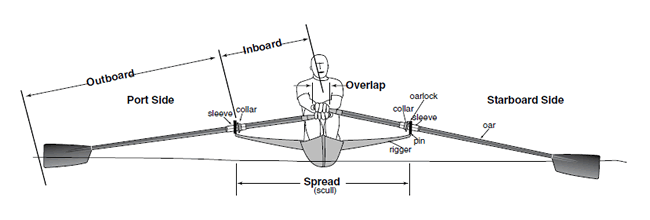I am looking for someone with an Annapolis Wherry fitted with the Piantedosi Row Wing that would be willing to measure the distance between the seat top of the Row Wing and a straight edge (plank) set across the gunnels at the pin station (the fore/aft position of the oarlock pins on the rigger). That measurement will enable me to precisely position the rig that I have built for my Annapolis Wherry so as to duplicate the rest of the geometry of the Piantedosi rig. I took the dimensions from the cross section view of the Piantedosi rig at the pin station, (provided by CLC on the web site along with the plan view and profile), but there is some ambiguity as to whether the seat is installed in these diagrams. There is something very thin on top of the carriage that I suspect that is a seat platform. If so there is another inch or two of seat that is missing. The height of the oarlock is referenced to the seat top. I used the Row Wing diagrams to position the rails, carriage, stretcher, and oarlock in the same relative positions in the drop in unit. I need this measurement before I lock in the vertical position of the assembly in the boat. After working on some earlier iterations, it became clear that the least ambiguous point of reference for measurement and calibration purposes was the line between the top of the hull/gunnels at the pin station.
For those interested, following are some pertinent features of this modification: I did not install the seats. I connected the two seat thwarts with fore and aft 1”x2” rails to support Latanzo tracks. The forward end is cantilevered about 1 ft forward of the forward seat thwart. If I build another (a real possibility if this works out well) I would move that thwart forward to catch the end of the rails. There is no great force on the rails (just the rower’s weight) so this is an esthetic issue rather than a structural one. I installed an additional thwart at the pin station as the forces of the oars will be transmitted to the hull at this point and if necessary via a strut to the aft thwart. Note that all of the force from traditional rowing is also transmitted to the hull at this point via the oarlock that is located at approximately this position. I have used Latanzo tracks, carriage and stretcher bars (www.latanzorowingparts.com), and Concept II oarlocks (concept2.com). I am having the rigger constructed from aircraft aluminum tubing. If I can find a source for the knuckles used for the rear struts on the Piantedosi rig, I would not need to weld.
Thanks in advance.
